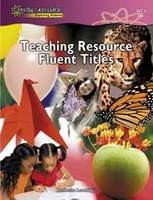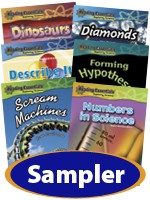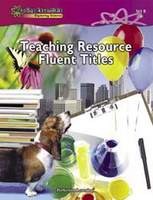- Grades 1 - 3
- Guided Reading Level J - O
- Lexile Level 420 - 820
-
Product Code SERIES ( MR #059663 )
* Regional restriction: This item is only available for sale within Canada.
* Regional restriction: This item is only available for sale within Canada.
Student Books are 6.5” x 8.5” (24 pages)
• GRL: J/K, L/M, N/O
• EIL: 19, 20, 22–24
• Word Count: 350 to 1,000
• Varied photo and text layouts
• Varied text styles, including captions, reports, labelled diagrams, sort and classify, report, factual recount, “how to” procedure, explanation, question and answer, description, and definition
• Experiments—hands on activities to support text
• Nonfiction Features: subheads, charts and graphs, sidebars, captions, labels, tables of contents, index, glossaries, diagrams

Discovering & Exploring Science
Fluent Level
Set A Complete Package
6 copies of 13 titles (78 books) / teacher resource / storage bin
$873.16
Discovering & Exploring Science
Fluent Level
Set A Sampler
1 each of 18 titles
$188.82
Discovering & Exploring Science
Fluent Level
Set A Teaching and Assessment Resource
$44.95
Discovering & Exploring Science
Fluent Level
Set B Complete Package
6 copies of 12 titles (72 books) / teacher resource / storage bin
$810.22
Discovering & Exploring Science
Fluent Level
Set B Sampler
1 each of 18 titles
$178.33
Discovering & Exploring Science
Fluent Level
Set B Teaching and Assessment Resource
$44.95No additional information available for this item.